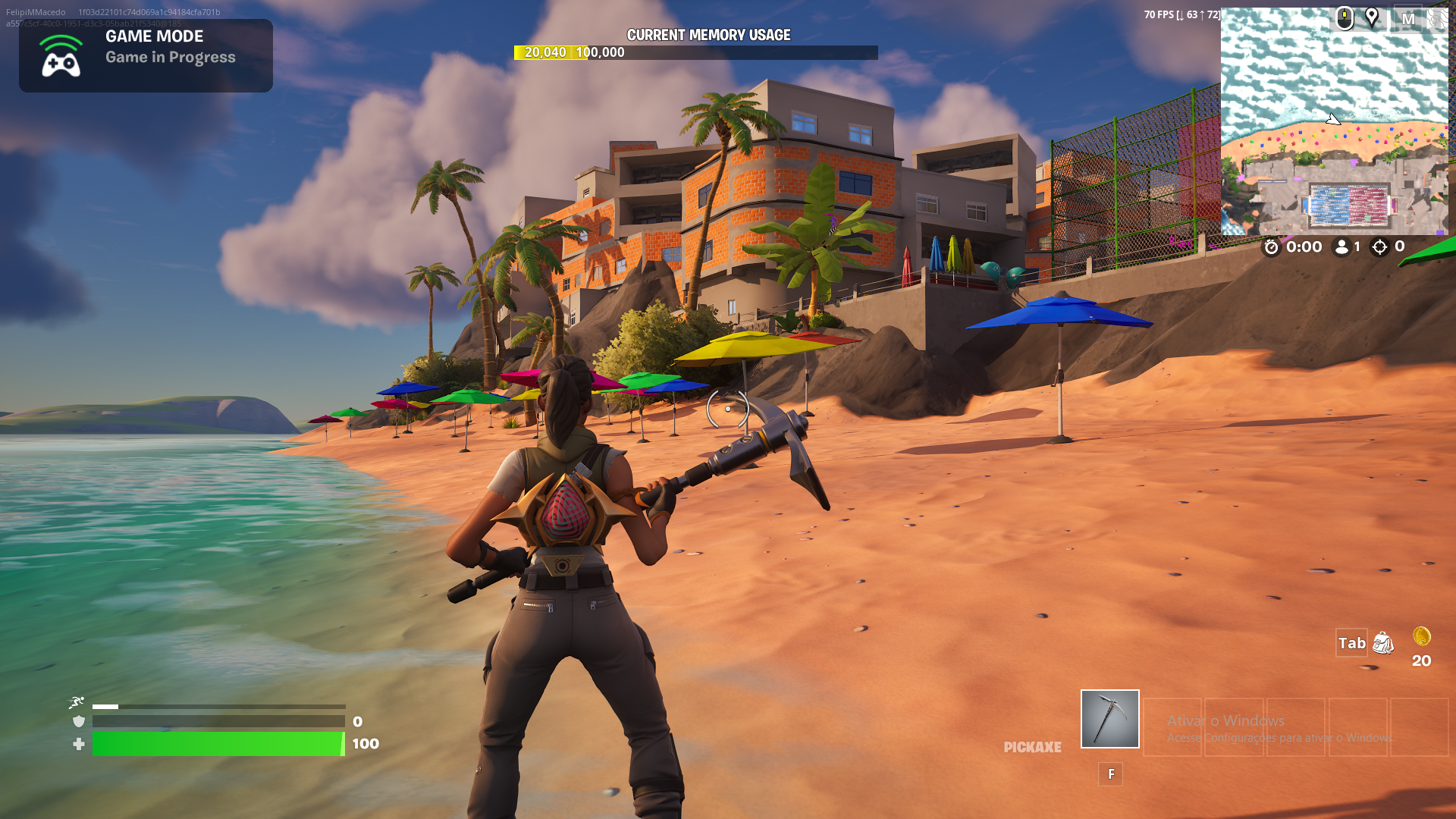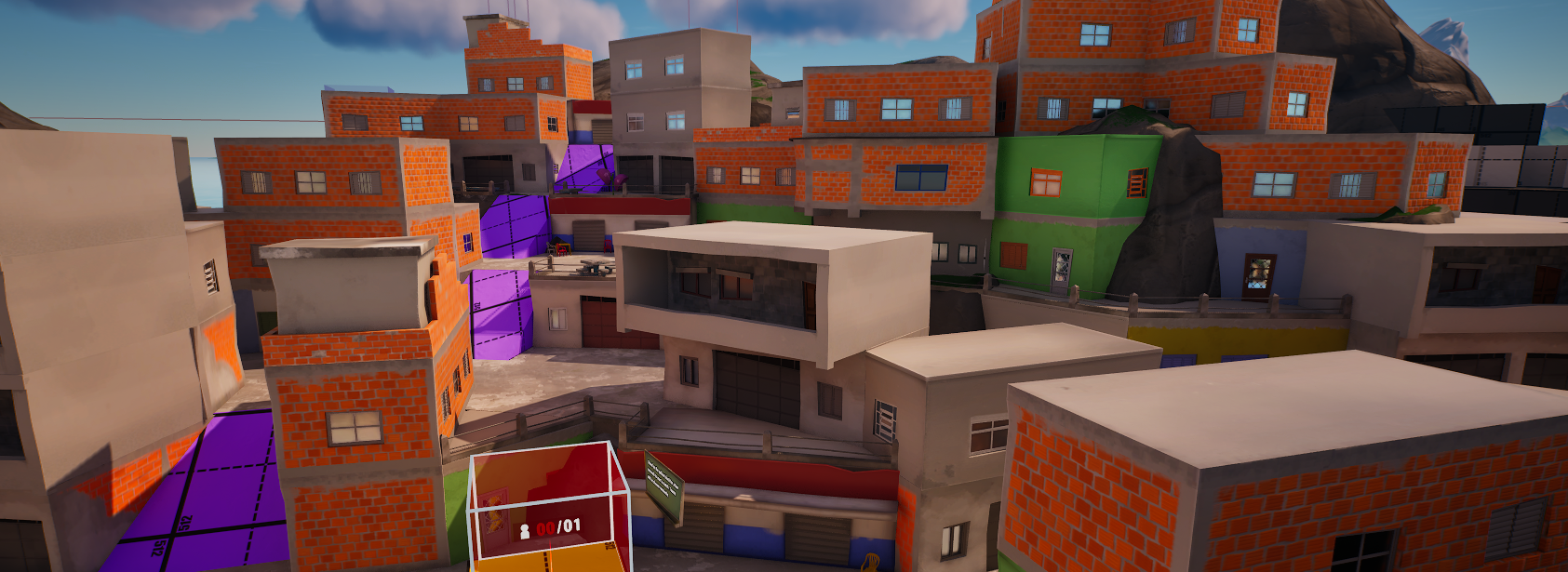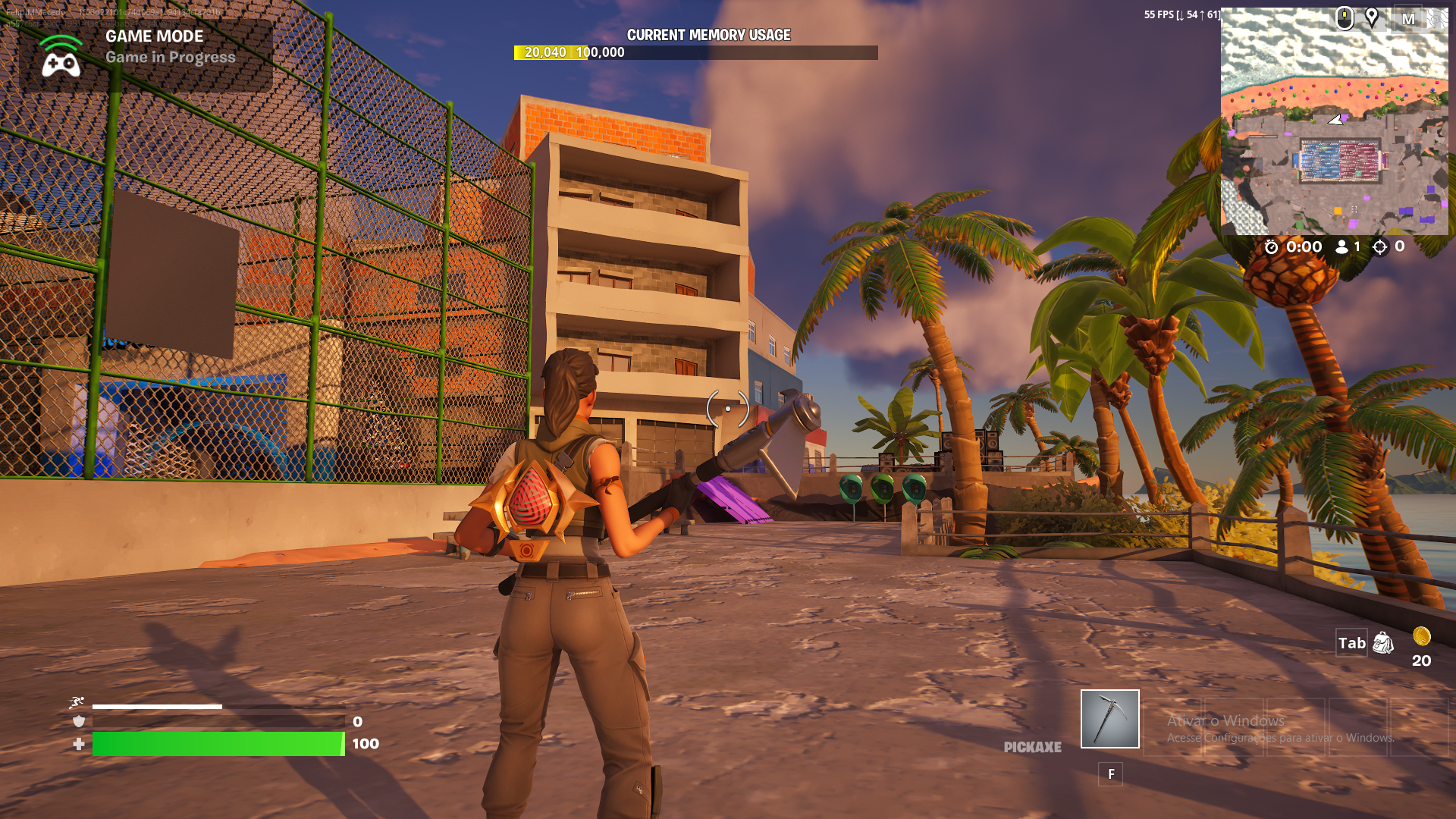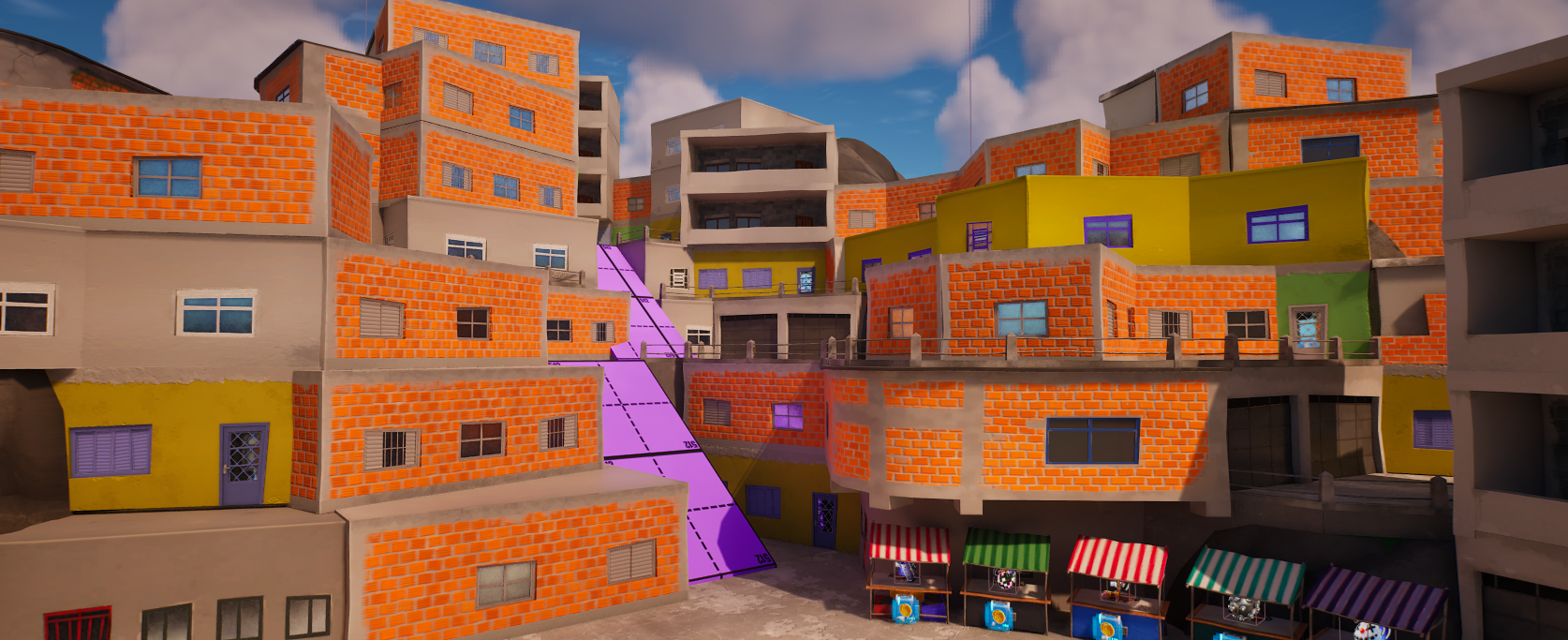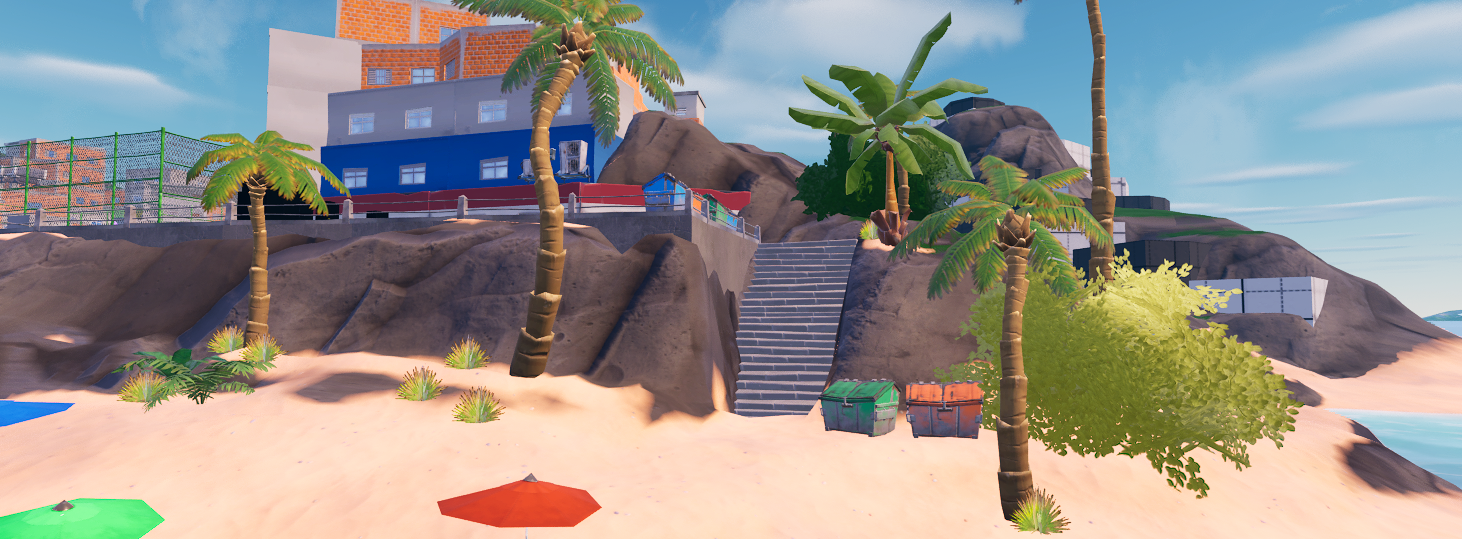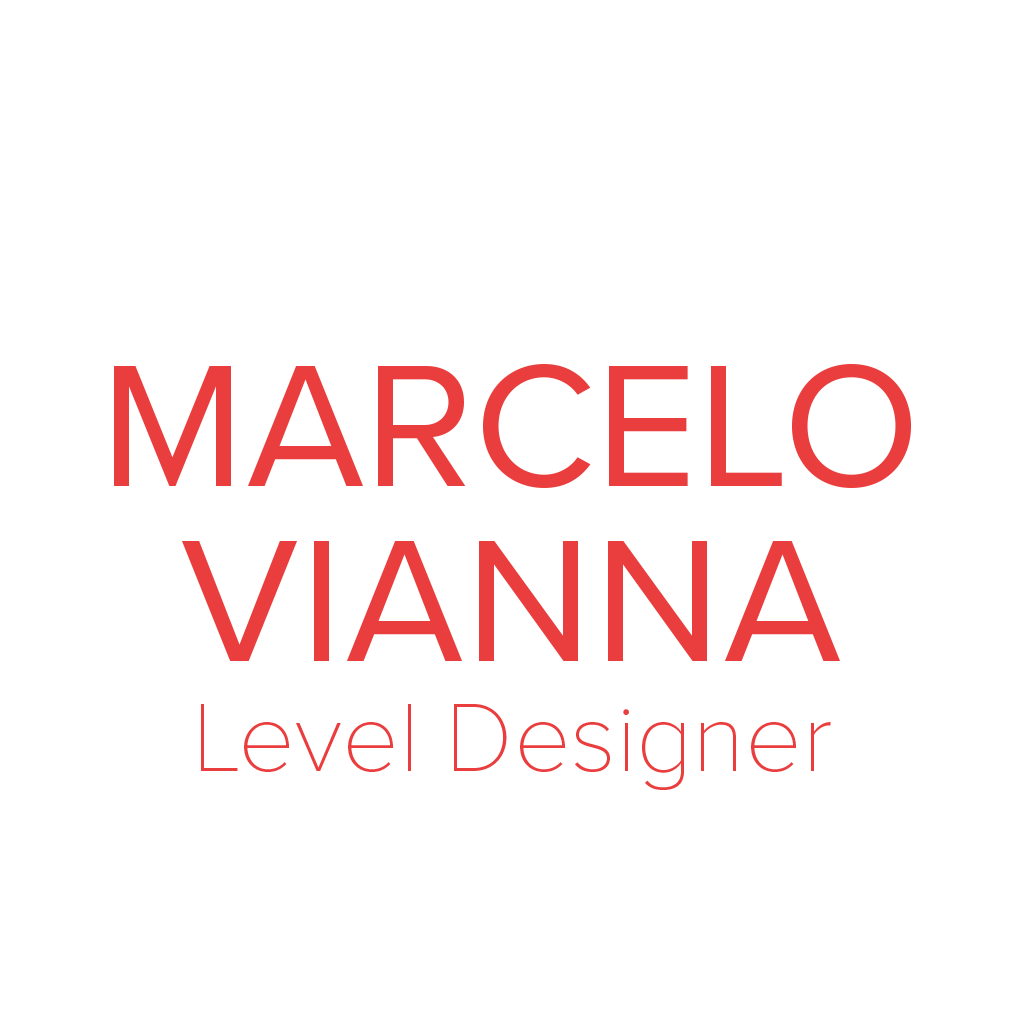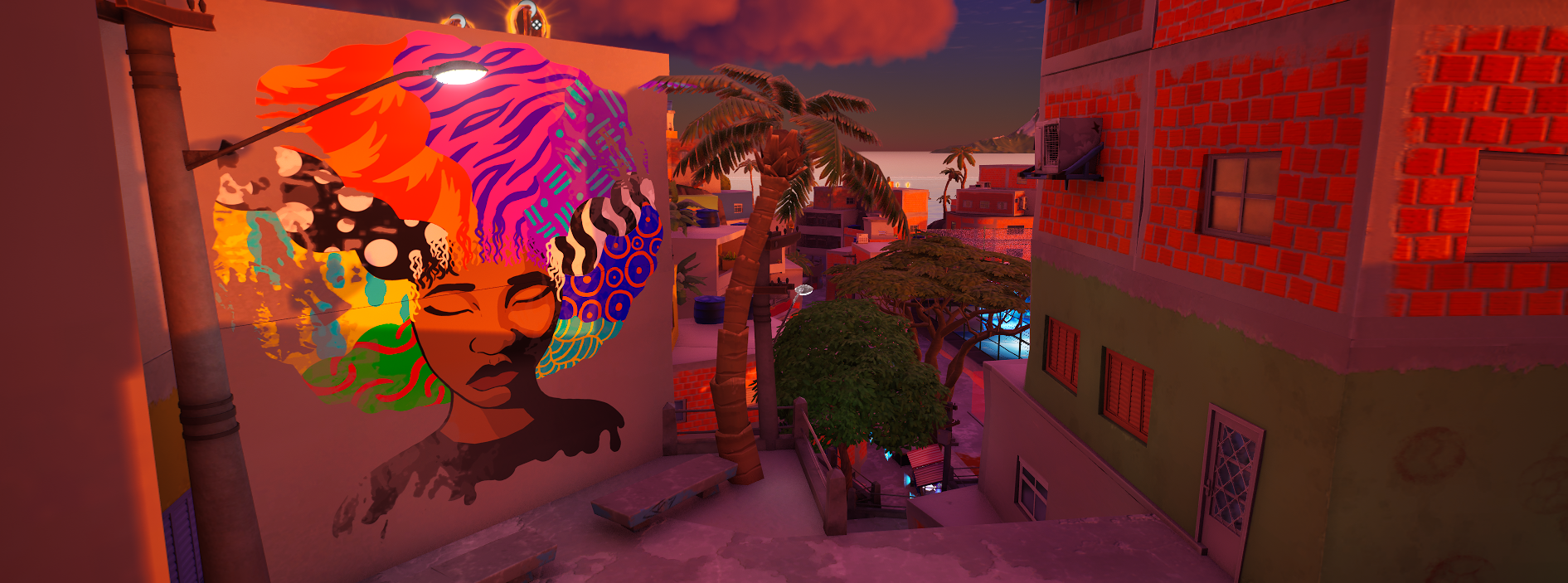
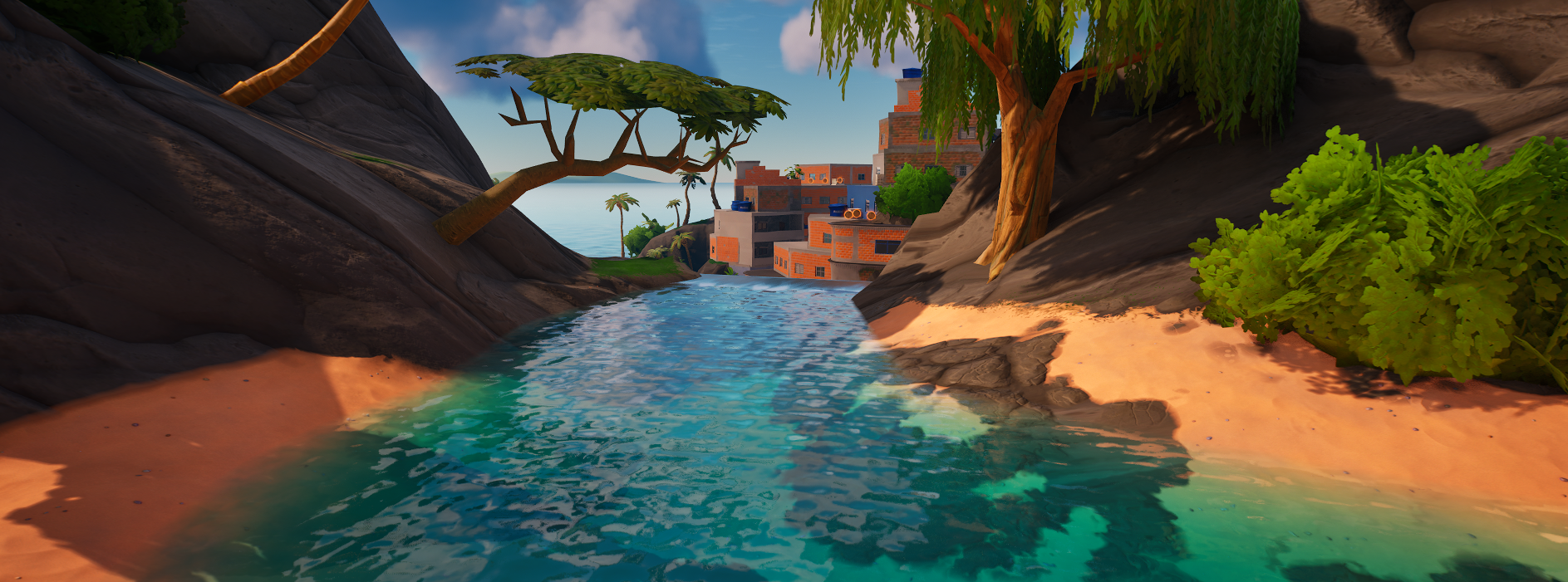
Hide & Seek: Rio Heights
2024 | UEFN
Hide & Seek: Rio Heights is a game mode for Fortnite that I worked on as a Level Designer for Hermit Crab.
As Hermit Crab's first Fortnite project, there was a lot of experimentation in our processes and planning. It was a great project for me since I was not only trusted with many choices but also encouraged to study and learn a lot about UEFN and to practice my Unreal skills.
This Level initially started as a Hub for a Soccer mini-game with 4 different fields, it was then refurbished into a prop-hunt by another squad.
This Level initially started as a Hub for a Soccer mini-game with 4 different fields, it was then refurbished into a prop-hunt by another squad.
_______________________________________________________
🎯 Design Goals
• Create a immersive and diverse environment for the soccer fields
• Use verticality when creating the city, inviting player to explore
• Emphasize Brazilian urban storytelling
🧠 Design Process
• Create a level topography using block meshes to have an overall shape for the island
• Create very distinct zones so each Soccer field would have it's own look
• Created a vivid city, that constantly guide players to POI and the fields so players could watch each other matches
• Used assets, postprocessing and lighting, to create a district colour and tone to the world evoking this Brazilian tropical fantasy
_______________________________________________________
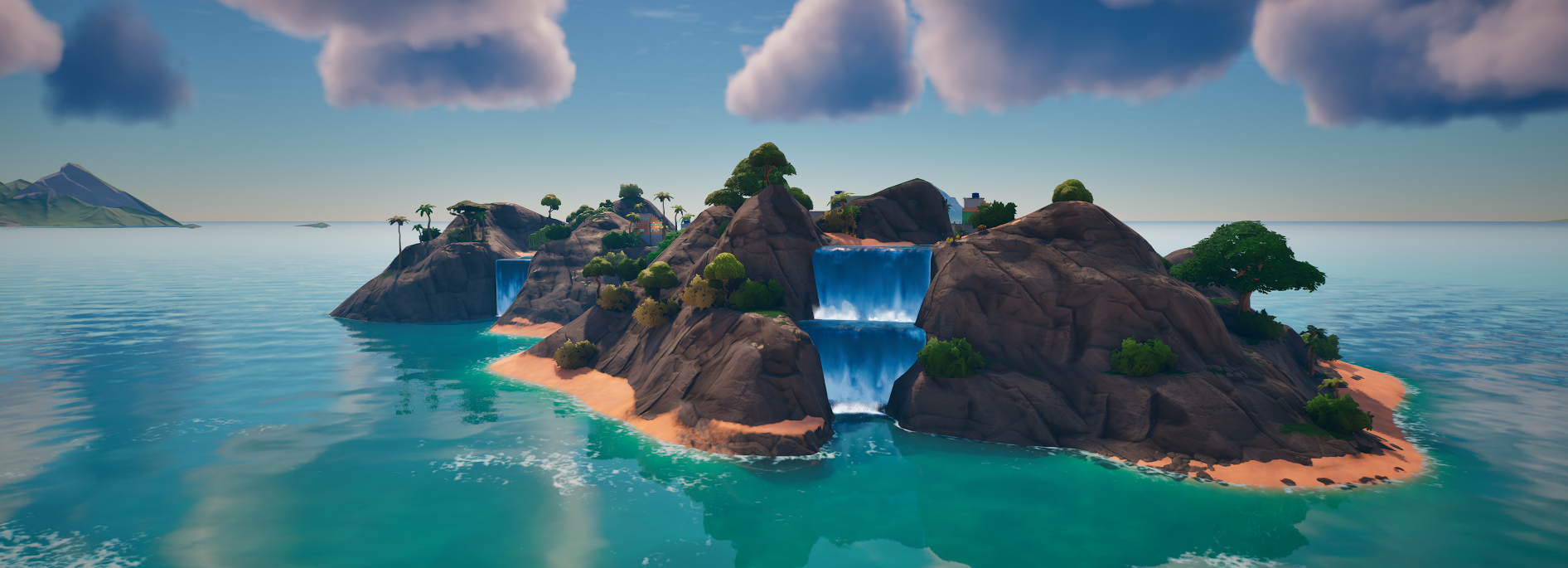
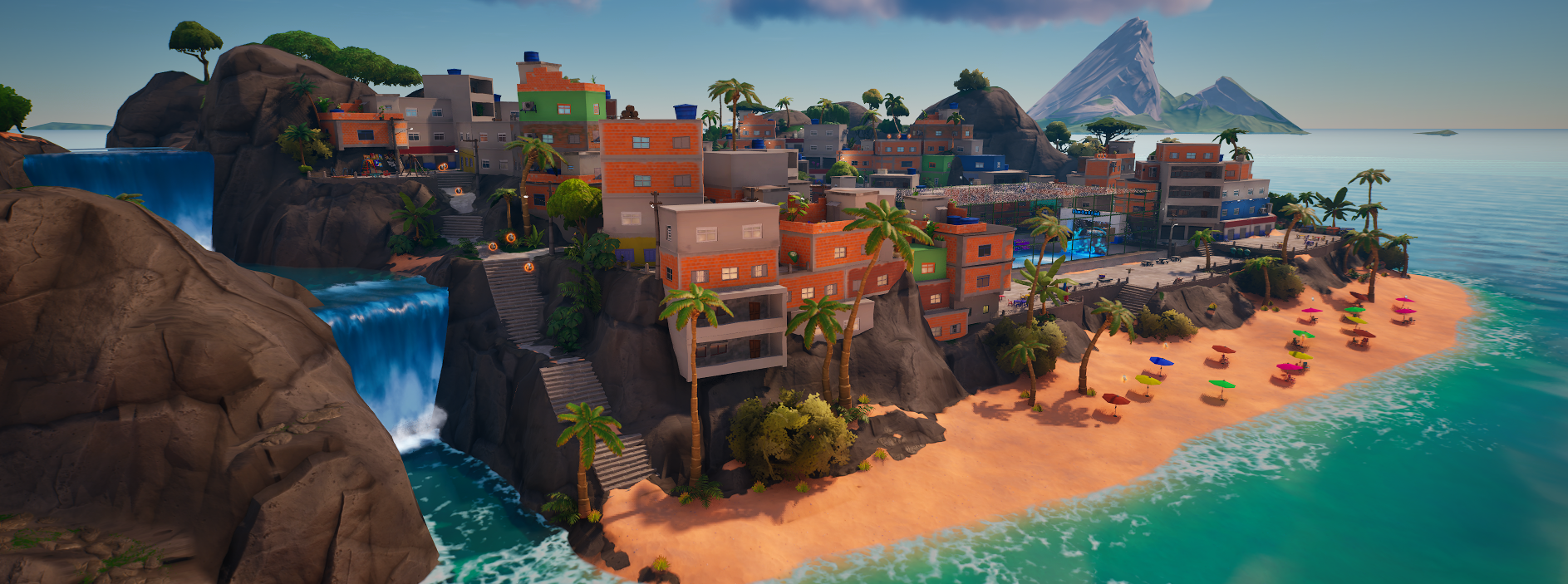
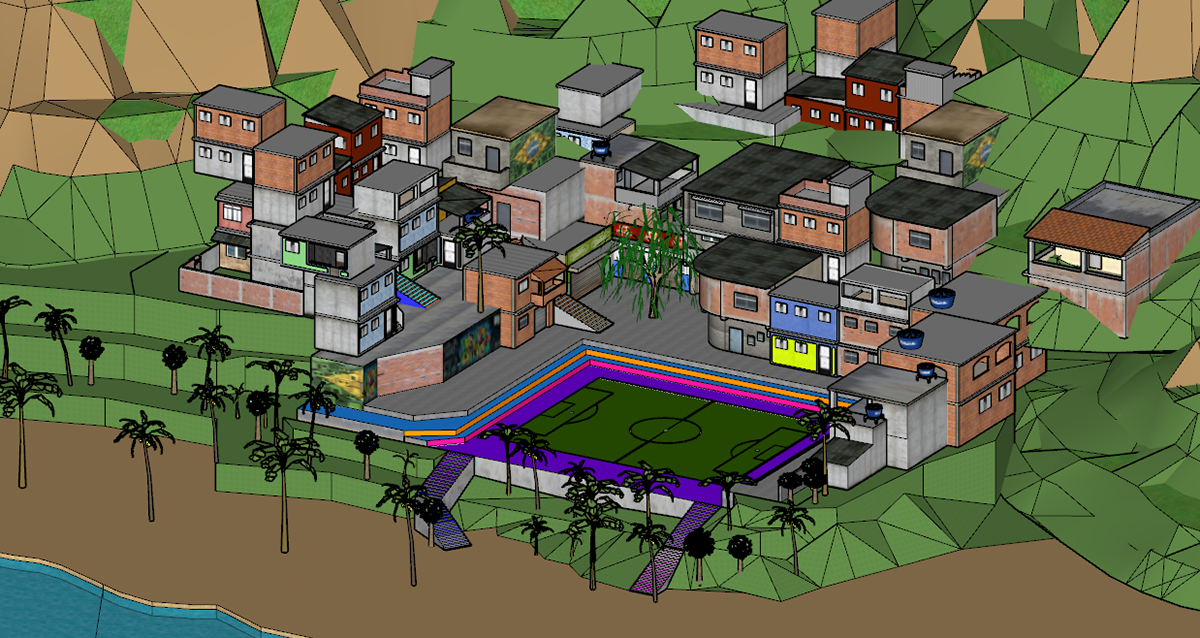
Sketchup model used to Pitch the Fortnite level

Some of my RLDD for Fortnite
Planning
Before the project began, the idea of a Fortnite level was pitched to the C-level executives. By the time I started working on it, the project already had a defined moodboard, themes, a mockup model in SketchUp, and the pitch document. Many key decisions had already been made.
My planning process started by playing and gathering data to create a Rational Level Design Document and a measurement Bible for future assets and modules. I also collected various references, not just from favelas and soccer fields, but also from their depictions in other games. Significant references for me were Mario Sunshine's Delfino Plaza and the Vidigal favela in Rio.
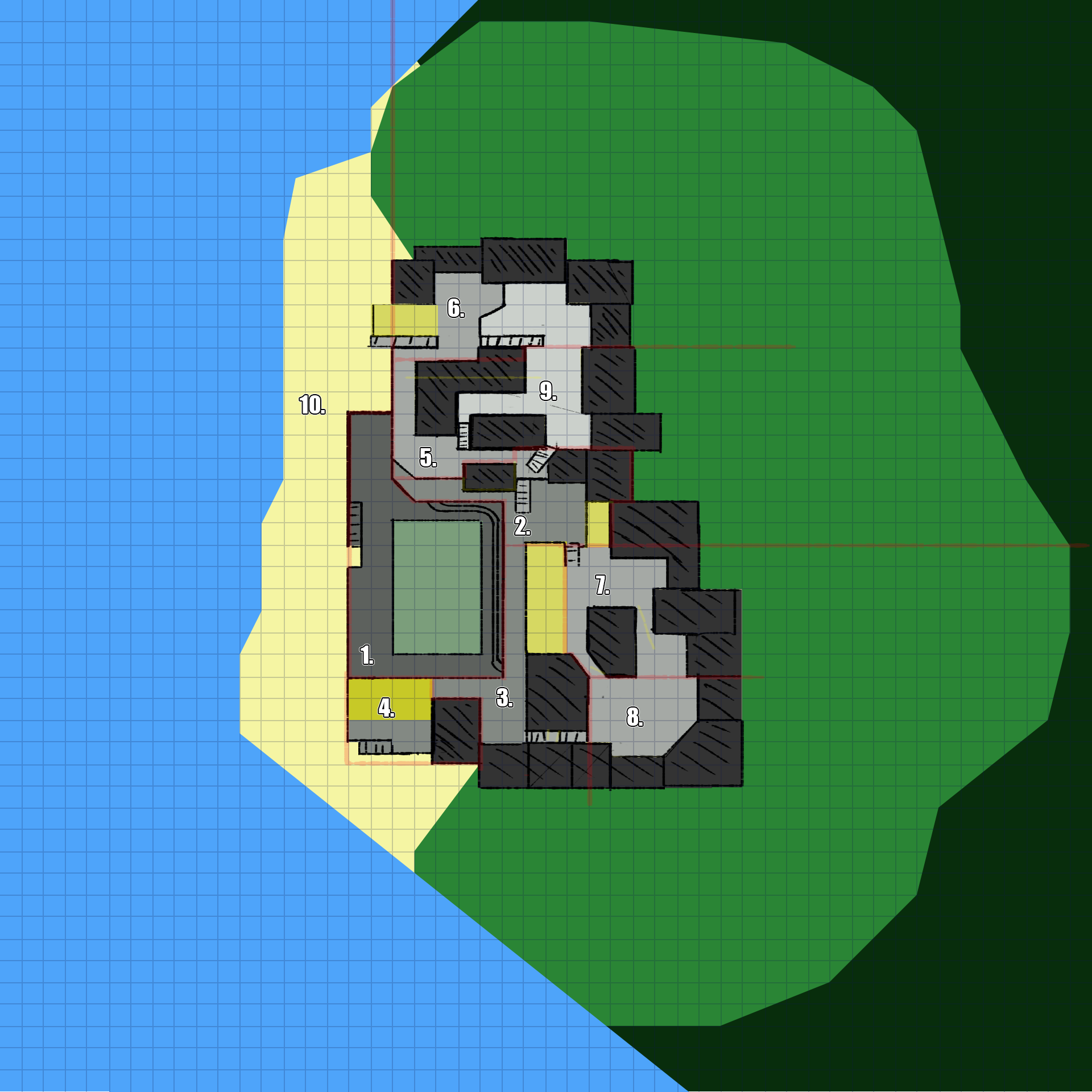
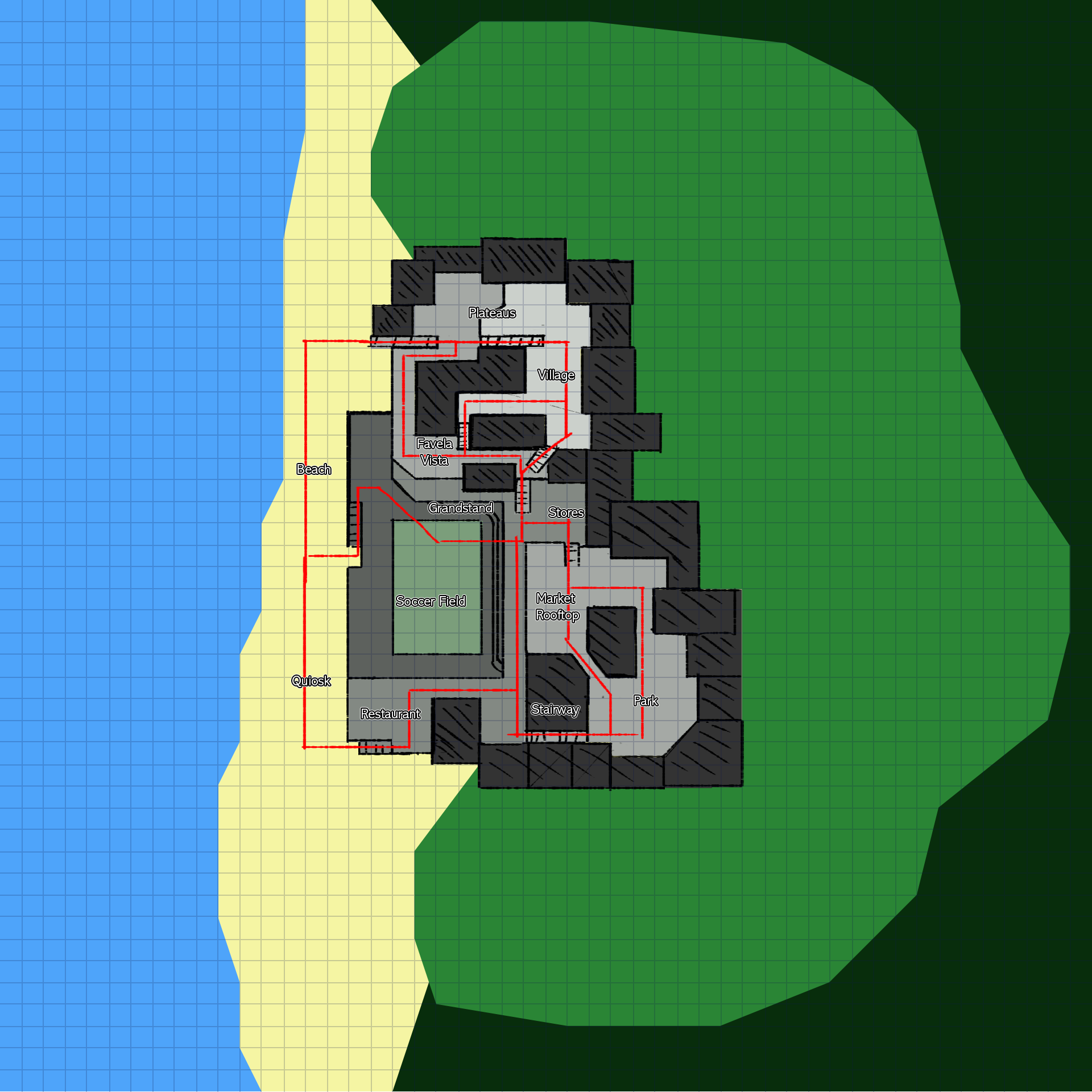
MAPPING
To begin, I measured the Pitch Model, adjusted it to the Fortnite Grid size to ensure the building modules fit better, and made some minor tweaks.
My primary goal in this step was to identify any early issues with player flow and define each space. Additionally, I reverse engineered a Bubble Diagram to visualize these zones and understand how they connected to each other.
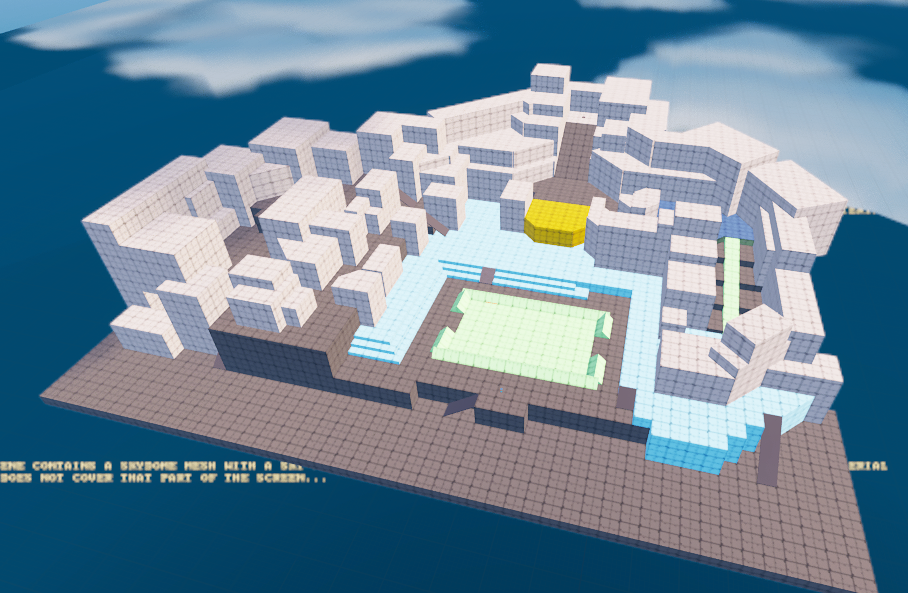
A rought Whiteblocking
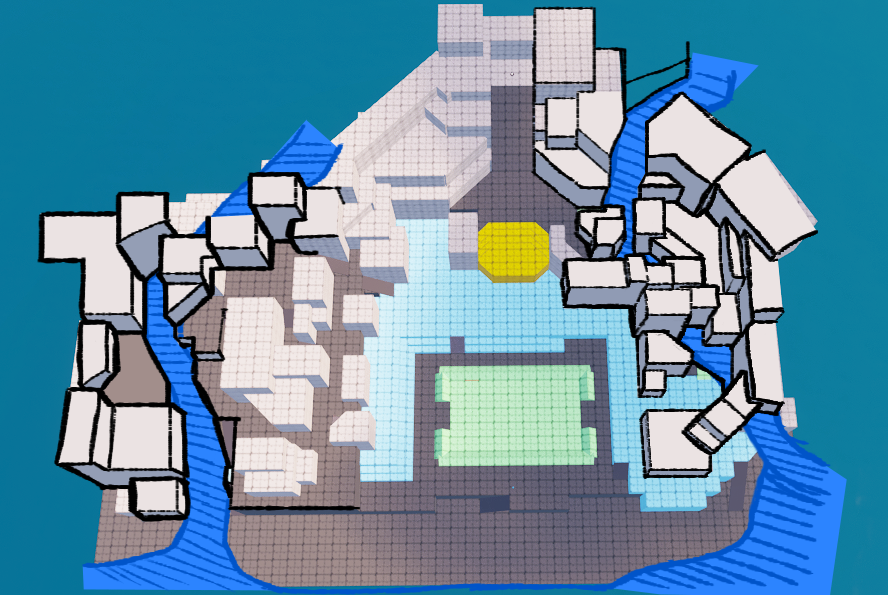
Iteration on the Map following some first impressions
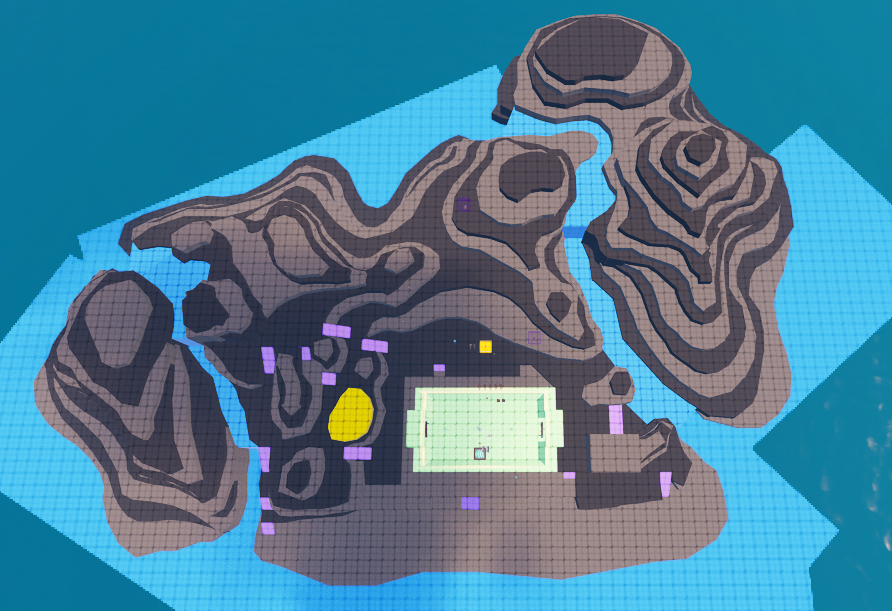
Blockout
Whiteblocking
With the map in hand, I finally opened UEFN and created a rough white blockout. The goal was to make this stage playable as quickly as possible to test dimensions, scales, and gather feedback.
We iterated extensively on this whitebox, refining the traversal, theming, and overall feel of the island.
BLOCKOUT
Once the whiteblocking felt solid, we moved on to creating a blockout, focusing on more refined shapes for the landscape and finalizing the island's form.
I approached this task sector by sector, validating each zone and using the topography to request assets from the art team. This allowed them extra time to create our landmarks and key assets.
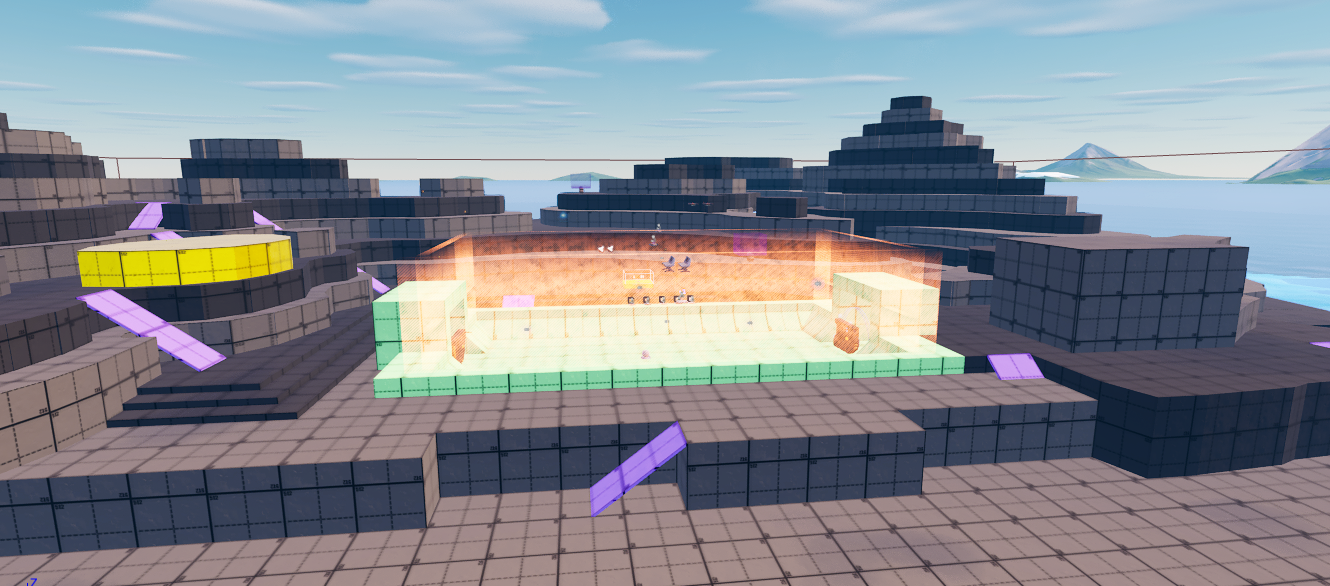
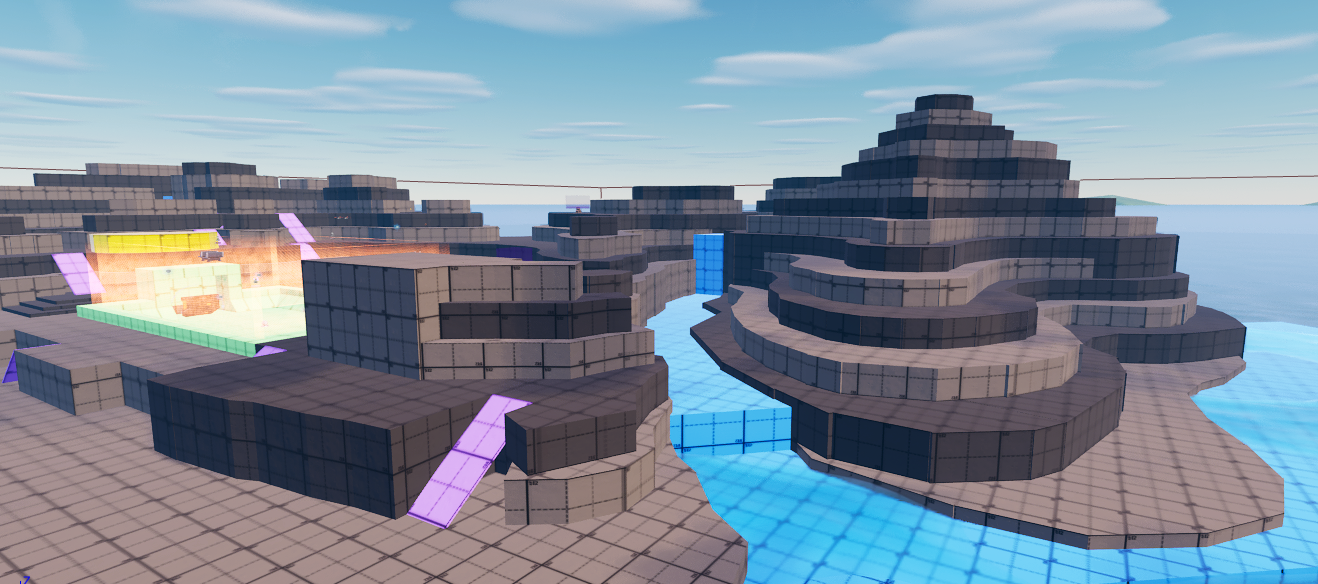
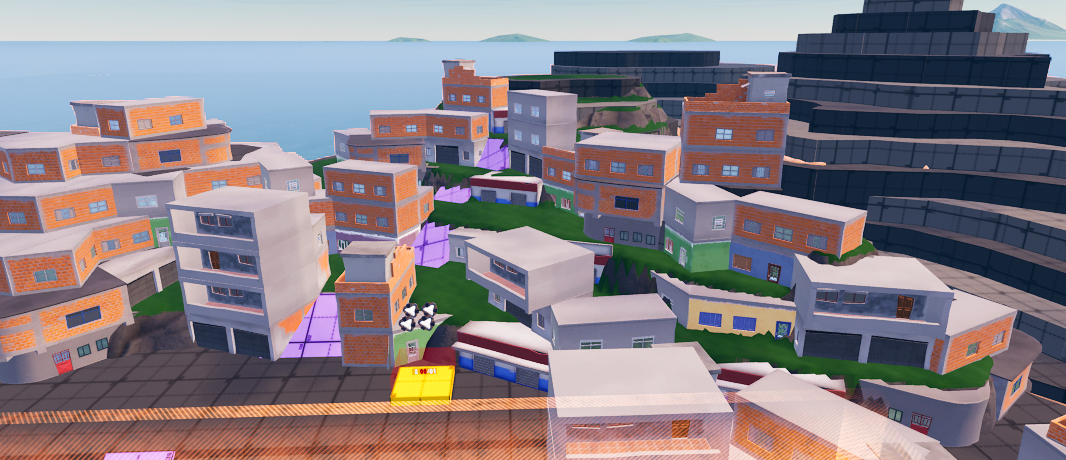
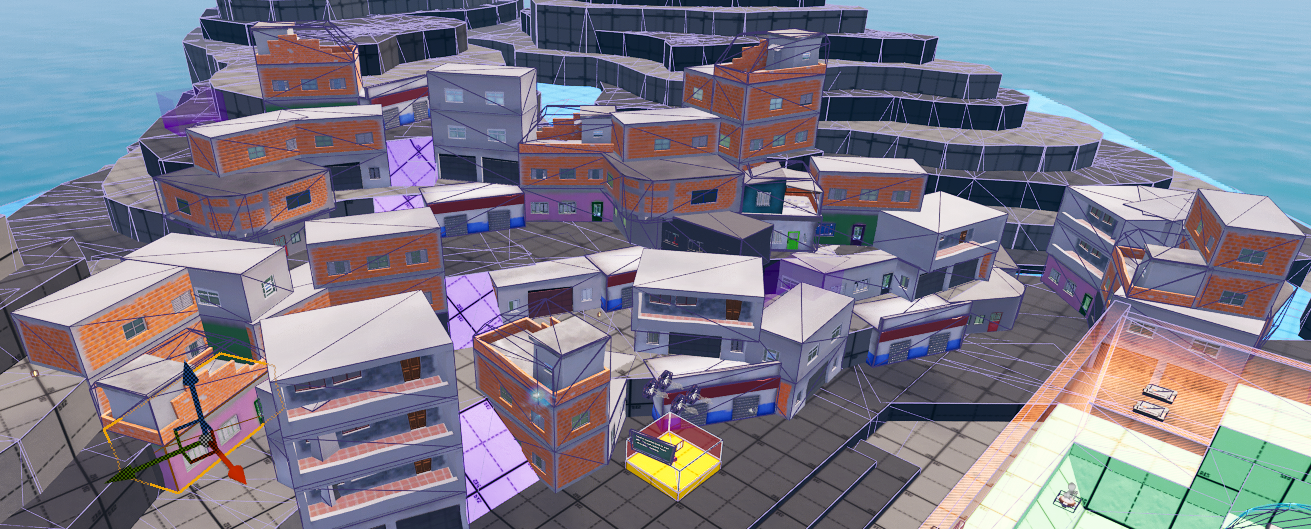
Vertical Slice
Once the blockout was validated, several assets for the first area were already completed. We decided to create a vertical slice of the first area, ensuring that it would be the most tested and iterated part of the game, confirming the feasibility of the scope.
Landscape
Afterward, I completed the landscape using the topography blockout as a reference.
I worked on this while the vertical slice of the first zone was being tested by QA and awaiting lead reviews.
I worked on this while the vertical slice of the first zone was being tested by QA and awaiting lead reviews.

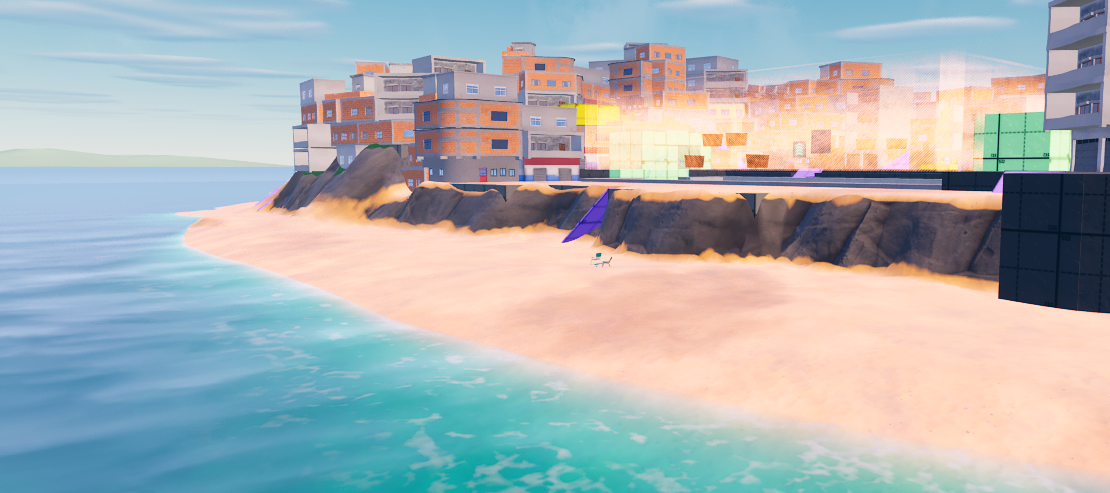
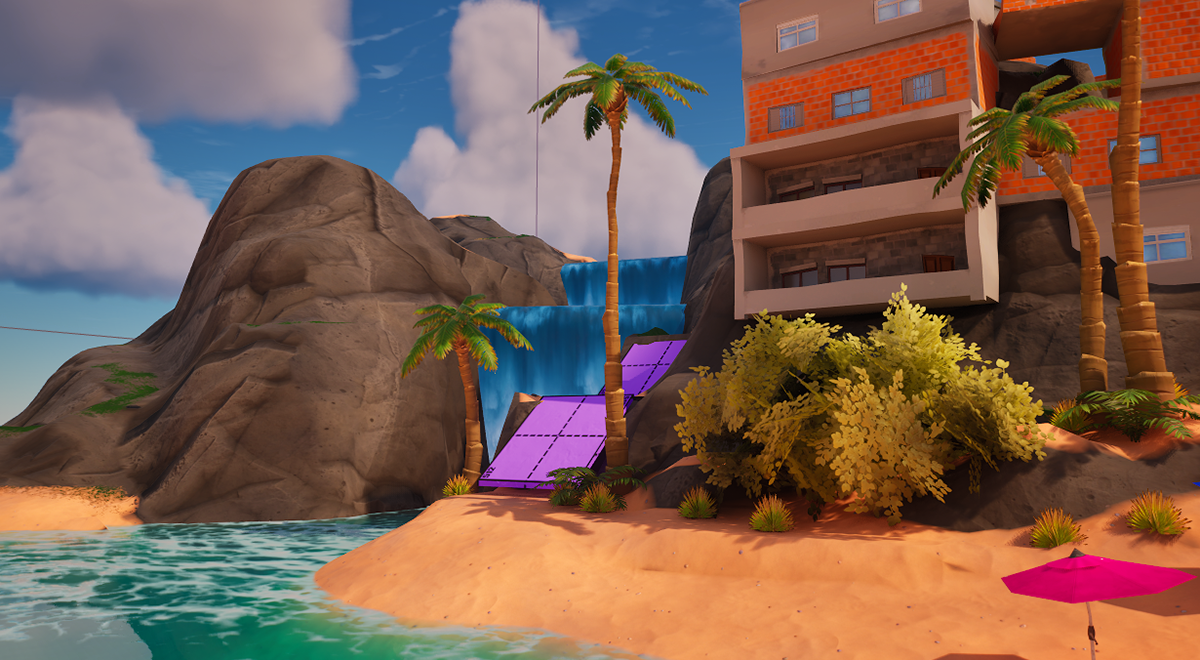
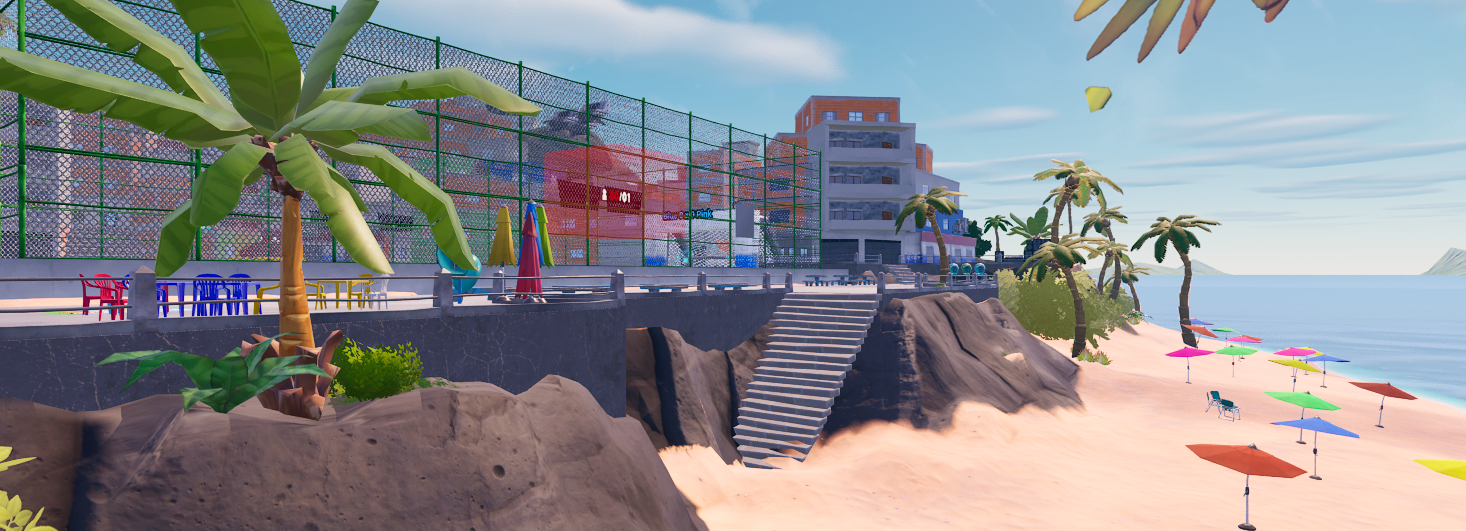
Polishing and Decoration
With the landmass and vertical slice approved by the leads, I received the green light to finish the level.
By this time, all the planning and validation were complete, and the art team had finished the key assets. My role at this stage was focused on level art, composition, and lighting.
Additionally, I requested some finer detail assets and fine-tuned the overall level.
So I just keep polishing, playtesting and iterating on the level.
